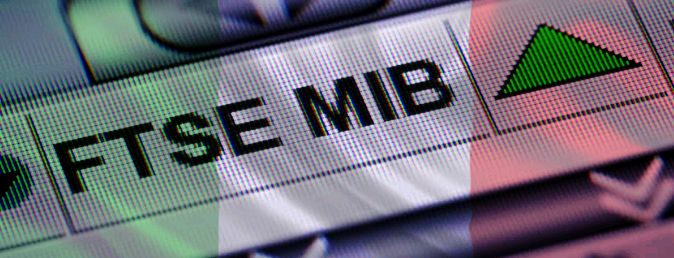The Ibex falls 1.4% after Italy's bidding and loses the 9,400 again
Italy has finally set a deficit target of 2.4% in its budgets for 2019

The worst scenario has finally come true. Italy has launched a bid to the European Union by setting a deficit target in its Budgets for 2019 of 2.4%. Experts anticipated on Thursday that if this finally happened there would be a negative reaction in the Italian markets and therefore in the rest of Europe.
IBEX 35
11.656,600
-
0,39%44,90
- Max: 11.674,00
- Min: 11.520,90
- Volume: -
- MM 200 : 11.125,61
And that is what has happened. The Ibex 35 has fallen 1.45% to 9.389.20 points (although it has fallen to 9.299 at one point), which has left the monthly balance almost flat, since the index started September from 9.399 points. For its part, the Italian FTSE MIB has collapsed by 3.7%.
The exposure of Spanish banks to Italian debt is important and that has penalized our entities. Bankia (-3.68%) was the most bearish value, followed by Santander (-3.25%) and Sabadell (-3.01%). In addition, Telefónica has fallen 1.94%, BBVA 2.12%, Inditex 1.43% and Iberdrola 1.28%.
In positive, very few values. DIA has rebounded 1.34% after Bolsamanía has published that Mikhail Fridman has reached 29% of the capital and has remained on the verge of launching a takeover bid. In addition, Acerinox (+ 1.11%), Siemens Gamesa (+ 1.07%) and Aena (+ 1.01%) were the other most bullish values.
THE SITUATION OF ITALY
"The market will continue to focus on Italy and on the official release of the Italian growth, debt and deficit forecasts for 2019 that were originally published last night." The Italian government said it has reached an agreement on a 2.4% budget deficit in 2019, which is well above the market consensus and at the higher end of our range of 2.0% -2.4% of GDP ", explain the experts at Danske Bank.
Despite Italy's plan, Berenberg's experts stress that, with a fiscal deficit below 3%, a current account surplus and an economy that is growing at least modestly, "Italy is not the main candidate for an immediate crisis of debt, unless the radicals become even more imprudent. "
However, these analysts add, "it is very possible that Italy will suffer a real debt crisis once the next recession (predicted perhaps for 2021) highlights the underlying weaknesses of the country, while reducing the risk appetite of the countries. investors ".
Meanwhile, the most imminent problem in Italy is to avoid the resignation of Giovanni Tria, Minister of Economy, who had a more moderate approach and in agreement with the European Commission and which Matteo Salvini and Luigi Di Maio have ignored. The Italian press assures Friday that the president of Italy, Sergio Mattarella, has asked Tria not to resign to avoid the uncertainty of the market.
Moreover, in Spain the government crisis continues to grow hand in hand with the doubts surrounding the Minister Pedro Duque, without forgetting everything related to the Minister of Justice, Dolores Delgado. From the outside, Pedro Sánchez has conditioned the call - or not - of early elections to what happens with the Catalan separatists.
OTHER FEATURED VALUES
In addition to all this, it should be noted that this Friday there were business results published, especially from small companies, given that, officially, the deadline to submit results for the first half ends on September 30. Duro Felguera, for example, has reported that its losses have shot up to 54.9 million until June. The value has plummeted 49.5%.
Also the business plan, stress that OHL has continued to fall (-12%) after the bump of 23% of the last day. In addition, the strong declines in Mediaset (-2.81%) and Atresmedia (-4.38%) after a cut in Barclays were news.
ECONOMY AND RISK PREMIUMS
Regarding the macro data of the day, inflation in the Euro Zone has advanced to 2.1% in September. In Spain, GDP grew by 0.6% in the second quarter and the CPI maintained its year-on-year rate stable at 2.2% in September.
In the currency market, the euro fell 0.2% against the dollar, up to $ 1.1620. In the commodity market, Brent oil rose 1.3% to $ 82.78.
And in the debt market, Spain's risk premium is up 4%, up to 103.6 points, although the yield on the Spanish 10-year bond eases by 0.5% to 1.51%. For its part, Italy's risk premium is up 12% to 268.6 points, while the return on the 10-year Italian bond is up 7% to 3.13%.





